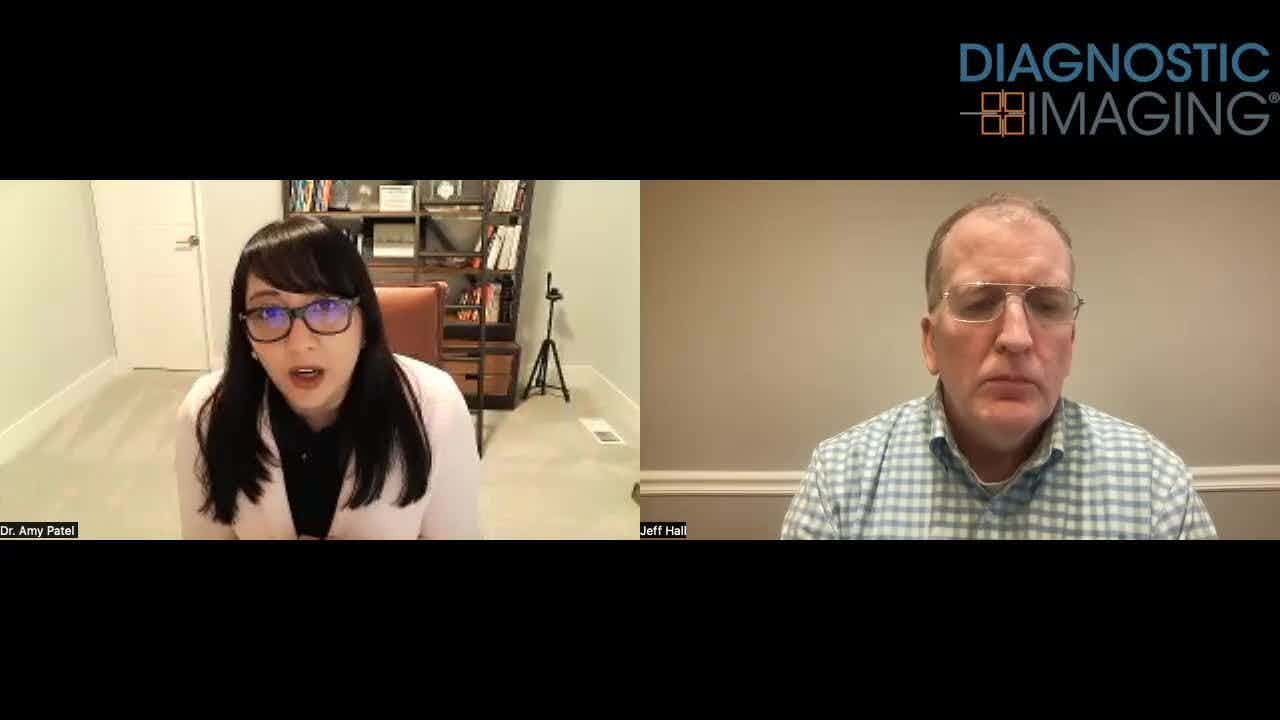Lung computer-aided detection makes further improvements
Computer-aided detection is scoring new points for lung cancer diagnosis, according to European researchers. Despite ongoing controversy, investigators also showed advances in CAD for lung cancer screening.
Computer-aided detection is scoring new points for lung cancer diagnosis, according to European researchers. Despite ongoing controversy, investigators also showed advances in CAD for lung cancer screening.
A number of preliminary studies published in clinical journals in late 2004 or presented at last year's RSNA meeting showed promising results for CAD's sensitivity in combination with multislice CT. The latest data presented earlier this year at the European Congress of Radiology corroborate findings and highlight gains in workflow.
Dr. Dag Wormanns and colleagues at the University Hospital of Munster in Germany assessed randomly 50 MSCT scans of the chest. Two independent radiologists (A and B) read scans using CAD as a concurrent reader twice with a one-week gap between readings. In addition to sensitivity, the investigators recorded the times needed for concurrent reading with CAD, for second reading without CAD, and for CAD alone as second opinion. They found the use of CAD for second opinion was the best bet for improving sensitivity and workflow.
CAD used as a concurrent reader could save reporting time, but it may do so at the expense of some sensitivity. If the clinical setting demands higher sensitivity values, CAD should be used for a second opinion instead. Even though reporting time increased when CAD was used as a second reader, so did sensitivity, Wormanns said.
Using CAD, the German team detected a total of 225 nodules. Sensitivity values recorded for CAD as a concurrent versus second opinion reading were 52% versus 57% and 69% versus 74% for radiologists A and B, respectively. The average reporting time was 206 seconds versus 251 seconds for concurrent and second reading, respectively. The difference was statistically significant (p < 0.001).
Although the study is a step ahead, there are challenges. The integration of CAD systems in the reporting workflow is not straightforward. The most desirable way of integration-as concurrent reader-requires even more sensitive CAD systems, Wormanns said.
In another study, Spanish investigators reported on a CAD system's impact on a lung cancer screening program. Principal investigator Dr. Gorka Bastarrika and colleagues enrolled 114 patients who underwent low-dose MSCT exams of the chest. An experienced radiologist and a radiology resident read the studies in addition to the CAD system. They found CAD increased the sensitivity of the low-dose MSCT protocol, changed patient management in several cases, and significantly reduced the time needed to read thin-section MSCT scans.
Since the first Early Lung Cancer Action Project study, others have been performed to determine whether early lung cancer detection with low-dose CT is feasible. The Spanish team confirmed that MSCT's improved spatial and temporal resolution increases the sensitivity for detection of small pulmonary nodules, even with low-radiation-dose (20 mAs) protocols.
They noted an important drawback, however. Thin-slice scanning significantly increases the number of images and thus interpretation time. A CAD system could be used in this setting as a second-reading tool to improve radiologists' performance, said Bastarrika, a radiologist at the University of Navarra Clinic in Pamplona.
"CAD's use could potentially impact the detection and management of pulmonary nodules in a lung cancer screening program," he said.
AI-Initiated Recalls After Screening Mammography Demonstrate Higher PPV for Breast Cancer
March 18th 2025While recalls initiated by one of two reviewing radiologists after screening mammography were nearly 10 percent higher than recalls initiated by an AI software, the AI-initiated recalls had an 85 percent higher positive predictive value for breast cancer, according to a new study.
ECR Mammography Study: Pre-Op CEM Detects 34 Percent More Multifocal Masses than Mammography
February 28th 2025In addition to contrast-enhanced mammography (CEM) demonstrating over a 90 percent detection rate for multifocal masses, researchers found that no significant difference between histological measurements and CEM, according to study findings presented at the European Congress of Radiology.
Study: Mammography AI Leads to 29 Percent Increase in Breast Cancer Detection
February 5th 2025Use of the mammography AI software had a nearly equivalent false positive rate as unassisted radiologist interpretation and resulted in a 44 percent reduction in screen reading workload, according to findings from a randomized controlled trial involving over 105,000 women.










